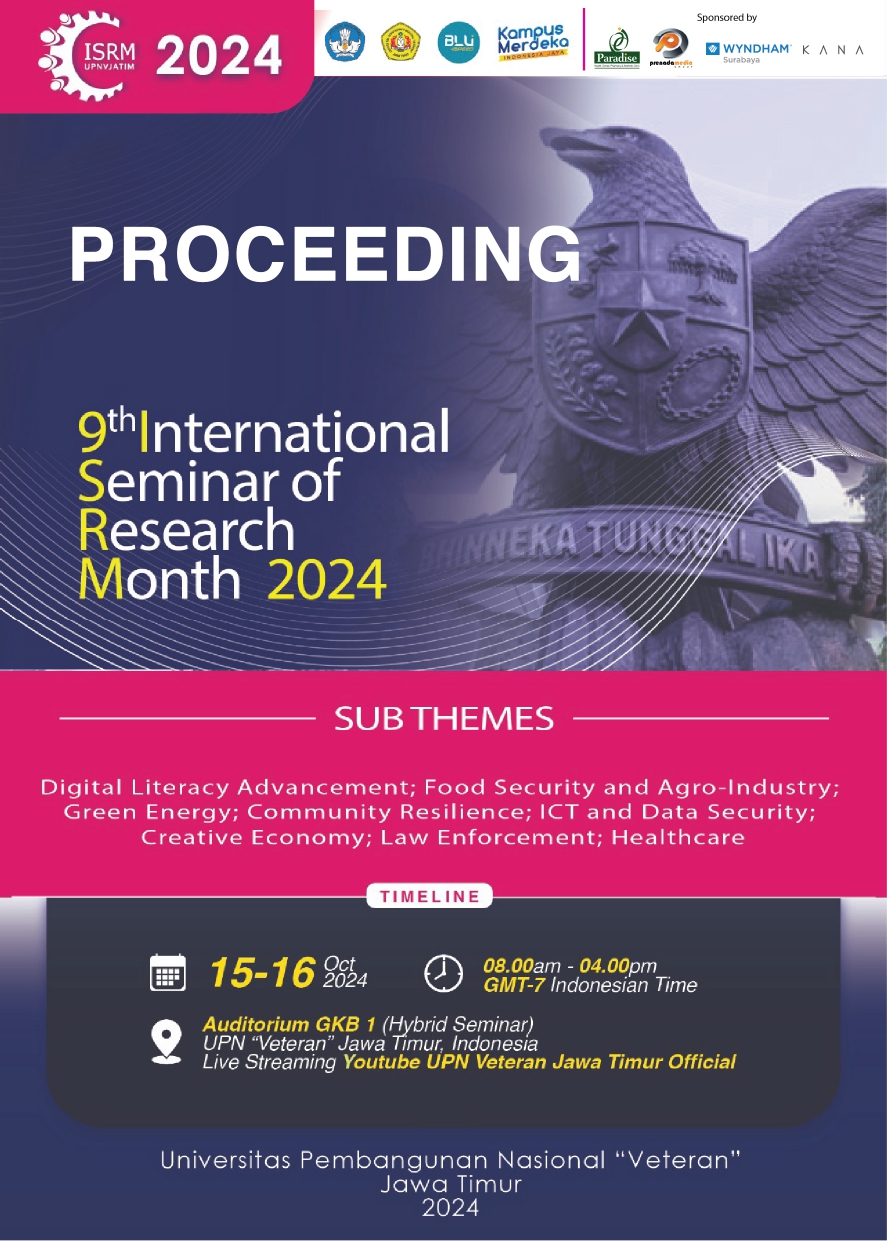Digital Literacy as a Cyber Crime Defense and Prevention Strategy
DOI:
https://doi.org/10.11594/nstp.2025.47116Keywords:
Digital literacy, cybercrime, prevention strategiesAbstract
This article discusses the importance of digital literacy as a strategy for defending and preventing cybercrime by focusing on the Road to Digital Literacy framework from the Ministry of Communication and Information Technology (Kominfo) and the Digital Competence Framework (DigComp). The background of this research is driven by the increasing cases of cybercrime that harm individuals, companies, and government agencies. The development of information and communication technology causes cybercrime to become an increasingly urgent issue and threatens individual security. This research uses a descriptive qualitative method that aims to explore and describe the condition of people's digital literacy and its relationship with cybersecurity. The results show that low digital literacy contributes to the increasing vulnerability of individuals and organizations to cyber attacks. This article contains a mapping framework tailored to the age range of the community. The mapping is done to identify the digital competencies needed, as well as concrete steps that can be taken to improve digital literacy among the community. Not only that, this article also recommends various strategies to improve digital literacy, including community-based education and training programs. These initiatives should involve collaboration between the government, educational institutions and communities in an effort to strengthen digital literacy. These programs should not only aim to improve technical knowledge, but also to build awareness of the importance of cybersecurity and digital ethics among internet users. Thus, digital literacy serves as a tool to improve individual knowledge and skills, while creating a safer digital environment. The findings are expected to provide insights and contributions in achieving the Sustainable Development Goals (SDGs), especially in strengthening cyber resilience in Indonesia. Effective efforts to improve digital literacy are expected to reduce the risk of cybercrime and create a society that is more aware of digital threats.
Downloads
References
Ameliah, R., Negara, R. A., Minarto, B., Manurung, T. M., & Akba, M. (2022). Status literasi digital di Indonesia 2022. Kominfo.
BSSN. (2024). Lanskap keamanan siber Indonesia 2023. https://www.bssn.go.id/wp-content/uploads/2024/03/Lanskap-Keamanan-Siber-Indonesia-2023.pdf
Citradi, T. (2020). Data Pengguna E-Commerce Bocor, Ini Bukti RI Rawan Cybercrime. Cnbcindonesia.Com. https://www.cnbcindonesia.com/tech/20200706140435-37-170521/data-pengguna-e-commerce-bocor-ini-bukti-ri-rawan-cybercrime
CNN. (2023). Kominfo klarifikasi soal dugaan bocoran data BSI yang beredar. Cnnindonesia.com. https://www.cnnindonesia.com/teknologi/20230522122857-192-952382/kominfo-klarifikasi-soal-dugaan-bocoran-data-bsi-yang-beredar
CNN. (2024). Fakta-fakta kebocoran data PDNS, dalang hingga jumlah tebusan. Cnnindonesia.Com. https://www.cnnindonesia.com/teknologi/20240624122531-185-1113359/fakta-fakta-kebocoran-data-pdns-dalang-hingga-jumlah-tebusan
Creswell, J. W., & Creswell, J. D. (2022). Research design: Qualitative, quantitative, and mixed-methods approaches. SAGE Publications.
Desmon, J., Hidayatulloh, S., & Jumaryadi, Y. (2024). Systematic literature review: Serangan deface website sebagai bentuk kejahatan siber. Jurnal Sistem Informasi, 14(2), 80-149.
Flick. (2018). An introduction to qualitative research. SAGE Publications.
Ginanjar, Y. (2022). Strategi Indonesia membentuk cyber security dalam menghadapi ancaman cyber crime melalui badan siber dan sandi negara. Jurnal Dinamika Global, 7(02), 291–312. https://doi.org/10.36859/jdg.v7i02.1187
Hartono, B. (2023). Ransomware: Memahami ancaman keamanan digital. Bincang Sains dan Teknologi, 2(02), 55–62. https://doi.org/10.56741/bst.v2i02.353
Hidayat, L. M. (2024). Diseminasi informasi pemerintah dalam meningkatkan literasi digital masyarakat. Repository IPDN. http://eprints.ipdn.ac.id/id/eprint/18541
Kemenkes. (n.d.). Kategori usia. https://ayosehat.kemkes.go.id/kategori-usia
Laksana, T. G., & Mulyani, S. (2024). Faktor – faktor mendasar kejahatan siber terhadap kemanusiaan. Jurnal Hukum Prioris, 11, 136–160. https://doi.org/10.25105/prio.v11i2.18960
NCSI. (2023). National cyber security index Indonesia. e-Governance Academy Foundation. https://ncsi.ega.ee/country/id_2022/
Putra, A. Y., & Arief, T. M. V. (2023). Pelaku “Phishing” bermodus APK via WhatsApp ditangkap, kuras rp 1,4 m tabungan korban. Kompas.Com. https://regional.kompas.com/read/2023/10/30/183238278/pelaku-phishing-bermodus-apk-via-whatsapp-ditangkap-kuras-rp-14-m-tabungan?page=all#
Putra Y, V. F. (2021). Modus operandi tindak pidana phising menurut UU ITE. Jurist-Diction, 4(6), 2525. https://doi.org/10.20473/jd.v4i6.31857
Razaq, N. (2022). Hacker deface 37 subdomain situs pemerintah Kabupaten Indragiri Hulu, minta blokir Kominfo. M.Cyberthreat.Id. https://m.cyberthreat.id/read/14231/Hacker-Deface-37-Subdomain-Situs-Pemerintah-Kabupaten-Indragiri-Hulu-Minta-Blokir-Kominfo
Restianty, A. (2018). Literasi digital, sebuah tantangan baru dalam literasi media. Gunahumas, 1(1), 72–87. https://doi.org/10.17509/ghm.v1i1.28380
Romagna, M. (2017). Hacktivism and website defacement: Motivations, capabilities and potential threats.
Rowe, N. C. (2019). Honeypot deception tactics. Autonomous cyber deception: Reasoning, adaptive planning, and evaluation of honey things. In book: Autonomous Cyber Deception, 35–45.
Salsabila, F. N., Agustina, Y., & Rachman, I. F. (2024). Literasi digital: Peran guru dan pendidik dalam meningkatkan kemampuan literasi digital untuk mencapai tujuan pembangunan berkelanjutan. Jurnal Ilmiah Research Student, 1, 342–351. https://doi.org/10.61722/jirs.v1i5.1380
Saputra, D. F. (2023). Literasi digital untuk perlindungan data pribadi. 17.
UI. (2024). UI wujudkan SDGs di ASEAN dan Global South. https://www.ui.ac.id/ui-wujudkan-sdgs-di-asean-dan-global-south/
Vuorikari, R., Kluzer, S., & Punie, Y. (2022). DigComp 2.2, the digital competence framework for citizens: With new examples of knowledge, skills and attitudes. Publications Office of the European Union.
Wicaksono, S. R. (2024). Social engineering: Konsep dasar dan perkembangan. Seribu Bintang. https://doi.org/10.5281/ZENODO.10466386
Downloads
Published
Conference Proceedings Volume
Section
License

This work is licensed under a Creative Commons Attribution 4.0 International License.
Authors who publish with this proceedings agree to the following terms:
Authors retain copyright and grant the Nusantara Science and Technology Proceedings right of first publication with the work simultaneously licensed under a Creative Commons Attribution License that allows others to share the work with an acknowledgement of the work's authorship and initial publication in this proceeding.
Authors are able to enter into separate, additional contractual arrangements for the non-exclusive distribution of the proceedings published version of the work (e.g., post it to an institutional repository or publish it in a book), with an acknowledgement of its initial publication in this proceeding.
Authors are permitted and encouraged to post their work online (e.g., in institutional repositories or on their website) prior to and during the submission process, as it can lead to productive exchanges, as well as earlier and greater citation of published work (See the Effect of Open Access).










